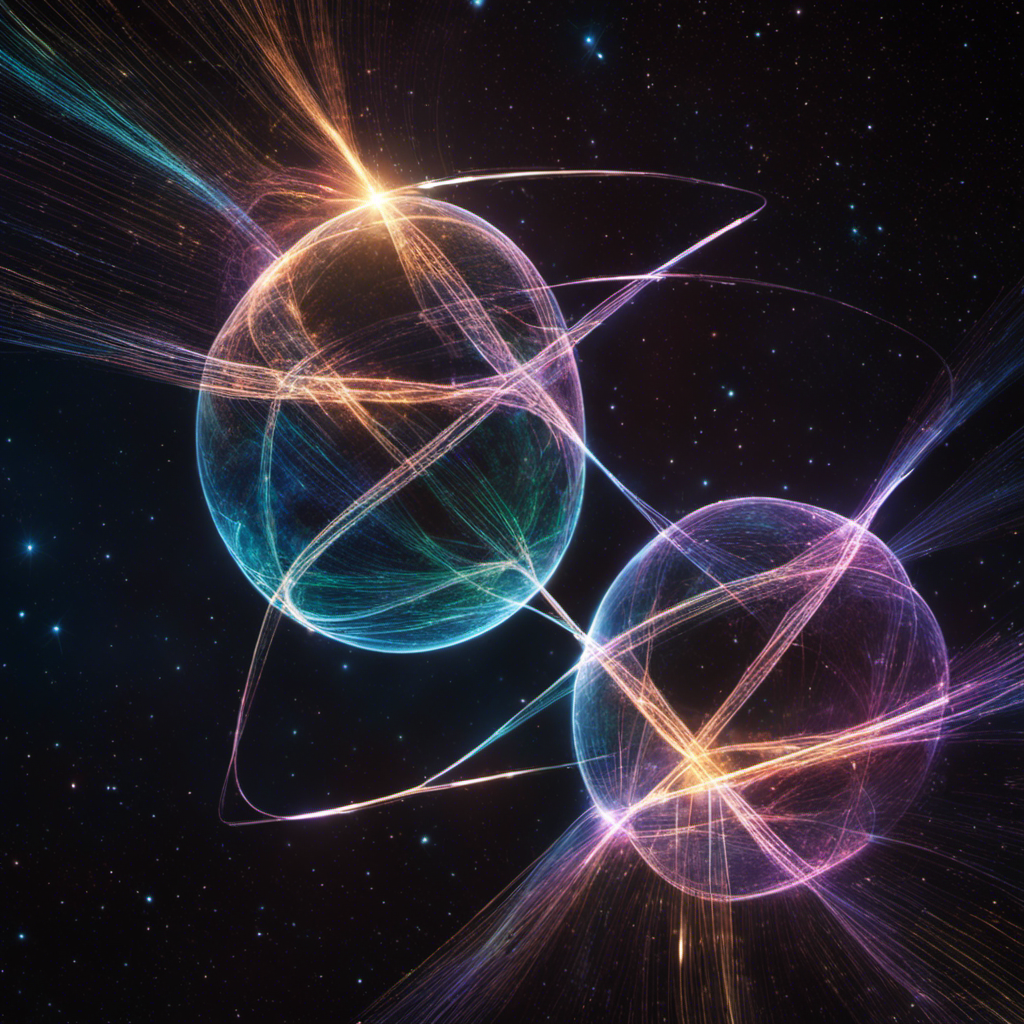Quantum entanglement, a term that stirs both curiosity and confusion, is a cornerstone concept within the breathtaking world of quantum computing. It’s a phenomenon that beautifully defies the norms of traditional physics and touches upon the wildest frontiers of our understanding. With its quirky characteristics and puzzling implications, quantum entanglement is a gripping subject, yet it remains shrouded in mystery for many.
In this article, we journey through the labyrinth of quantum computing, with quantum entanglement as our main subject of exploration. We delve into its complex structure and strive to understand its powerful relevance in this novel technological field. Unraveling the advancements made due to its comprehension, we illuminate this fascinating subject from different angles, shedding light on how far we have come and where we might be headed with this game-changing phenomenon.
What is Quantum Entanglement?
Quantum entanglement, a pivotal concept underpinning quantum mechanics, touches upon the strange, non-local interactions that occur between particles. This counterintuitive phenomenon describes a situation where multiple particles become intrinsically linked, in such a way that the state of one particle is directly connected to the state of another, no matter how vast the distance separating them within our cosmos.
The process involves a correlation of particle states, thereby evoking a ‘mirrored’ effect between these elements. These unusual linkages, predicted by quantum theory, assert that the properties of one particle (like its position, momentum, and spin) instantaneously influence the properties of its distant entangled partner, a conundrum referred to in theoretical physics as « spooky action at a distance ».
Diversity in the quantum realm is seen through various forms of entanglement, such as spin, energy, and momentum. A detailed understanding of this quantum coupling can shed light on the intricacies of the fundamental laws governing our universe. Moreover, the prospective practical applications of quantum entanglement are being keenly explored in fields like quantum computing, quantum teleportation, and quantum encryption.
Quantum entanglement is far from intuitive and can be challenging to fathom in the context of classic physics. Nevertheless, it’s been empirically confirmed to occur, endorsing its existence beyond the realm of theoretical speculation. Although controversial for decades, it is now a foundational pillar of quantum mechanics, validating the theory’s claim to describe the ultimate constituent-elements and laws of the physical universe.

Quantum Entanglement and Quantum Computing
Quantum entanglement is a fundamental component in the field of quantum computing. This unique phenomenon, derived from the principles of quantum physics, permits the occurrence of parallel processing in entangled qubits. This essentially confers upon quantum computers their remarkable processing capacity.
Aside from enhancing processing speed, quantum entanglement also paves the way for the implementation of quantum error correction, a highly important technique for the sustenance of quantum information’s stability. Quantum error correction plays an analogous role to error detection and correction codes in classic computing, albeit with a layer of complexity due to the quantum nature. Error correction prevents degradation of quantum information, ensuring the reliable operation of a quantum computing system.
For more comprehensive understanding regarding quantum entanglement, renowned sources such as Scientific American and Nature can be consulted. These sources offer extensive research and articles providing a deep dive into the fascinating world of quantum physics and entanglement.

Implications of Understanding Quantum Entanglement
Quantum entanglement, a phenomenon at the core of quantum mechanics, has long been a subject of intrigue and study. It holds the potential to revolutionize not only the field of quantum computing, but also cryptography, teleportation, and communication. This bewildering quantum property allows particles to become ‘entangled’, such that the state of one particle instantaneously influences the state of the other, regardless of their distance apart.
This mind-bending phenomena can be pivotal in accelerating the advancements in various domains. In fact, it could very well be the key to the next big breakthrough in quantum mechanics. The concepts of superposition and entanglement are what separates the realm of quantum mechanics from classical mechanics. It allows for the creation of new pathways and possibilities that are currently beyond the grasp of traditional computing, thus underlining the value of this field of study.
Quantum cryptography, for instance, uses the principles of quantum mechanics to develop secure communication channels that are virtually unhackable. Similarly, the concept of quantum teleportation – though currently more of a theoretical concept than a practical application – could revolutionize the field of data transfer and communication. The potential applications of quantum entanglement are vast and far-reaching and exploring them could lead to previously unthought-of advancements.
Understanding the intricacies of quantum entanglement and working towards its practical implementation, hence, bears great significance. It encourages researchers to delve deeper into the mysterious quantum world, provoking thoughts and studies on the complexities it houses. The wide range of its prospective applications further accentuates the need to demystify quantum entanglement and successfully exploit its properties.

Conclusion
In the realm of quantum computing, the potent capacity of quantum entanglement has begun to unfurl and no doubt is paving the way to a new dawn of immense computing potential. As we delve deeper into its complex nature, every step we take brings us closer to unlocking a richer understanding of this phenomenon. This understanding can lead to transformative breakthroughs in computational capability, revolutionizing the field beyond our current imagining.
The race to unravel the enigma that is quantum entanglement is akin to venturing into uncharted territories, where every new discovery pushes us closer to redefining the contours of computing. It’s a thrilling journey towards a new era of unprecedented computational prowess, teeming with infinite possibilities. Holding promise of unimaginable advances, quantum entanglement truly stands as the gateway to the future of quantum computing.
